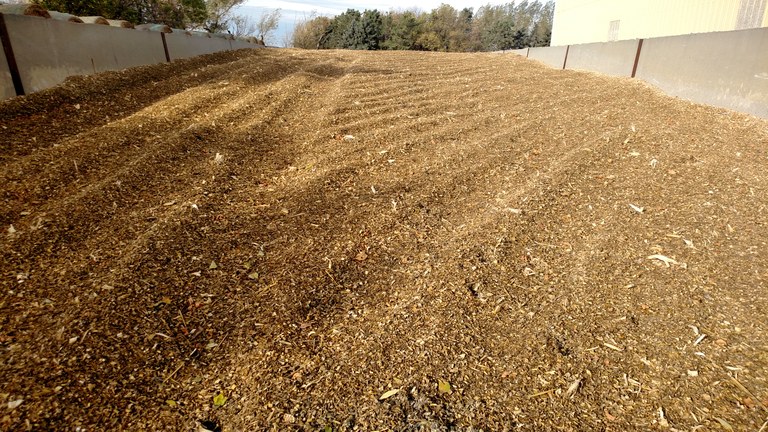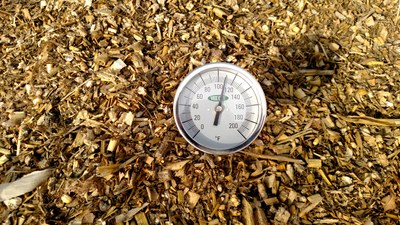Does Your Silage Pile Have A Fever?
Making corn silage is prevalent this time of year. Good quality silage can substantially help a increase the energy density of a cattle ration during cold winter months in North Dakota. Putting up high quality silage starts with chopping silage at a desired 62-65% moisture. Ensiling a greener, higher moisture corm plant above 67% moisture can lead to liquid seepage from the silage pile and poorer fermentation with the wrong type of acids produced. Ensiling silage with corn plant containing less than 60% moisture will lead to an undesirable ensiling process. While the ‘dry ‘pile might eventually create a silage smell, it may have a silage smell that smells more like dried earthy, caramel smell than the sweet crisp smell of well fermented silage.
Silage that was chopped too dry is difficult to pack well. Packing silage is important since squeezing the air out of the pile allows better fermentation. The problem with poorly packed dry silage is that the pile contains a lot of air.

In the ensiling process, the microbes will first use up the air with in the silage pile. This first step is the respiration phase and a lot of heat is created. This phase will last until there is no oxygen left. In the absence of oxygen, the microbes will switch to fermentation mode. A co-product of fermentation is the organic acids that pickle the silage. Eventually the acids will increase in concentrations, and the pH of the pile will become more acidic. When the pH drops enough, the fermentation stops and the ensiling process in done.

A sign of good fermentation is the relatively low temperature involved with the increasing acid content. High temperatures are found in silage piles that contain too much oxygen due to poor packing or corn silage that is cut too dry. High temperature (135 degrees F) indicates poor ensiling. High temperatures lead to nutrient loss due to respiration.
Using a 3 foot long temperature probe, two silage piles had temperatures recorded on a daily basis. At the 3 foot depth, they were warm but not hot. At the 6 inch depth these uncovered piles were heating and losing feed value. These piles were packed at around 62% moisture. The insides of the piles were fermenting nicely. The outside 6 inches were in respiration. To reduce heating in the outside 6 inches next year, covering the silage pile with a combination oxygen limiting membrane and plastic cover is encouraged.
Karl Hoppe
Area Extension Livestock Specialist


